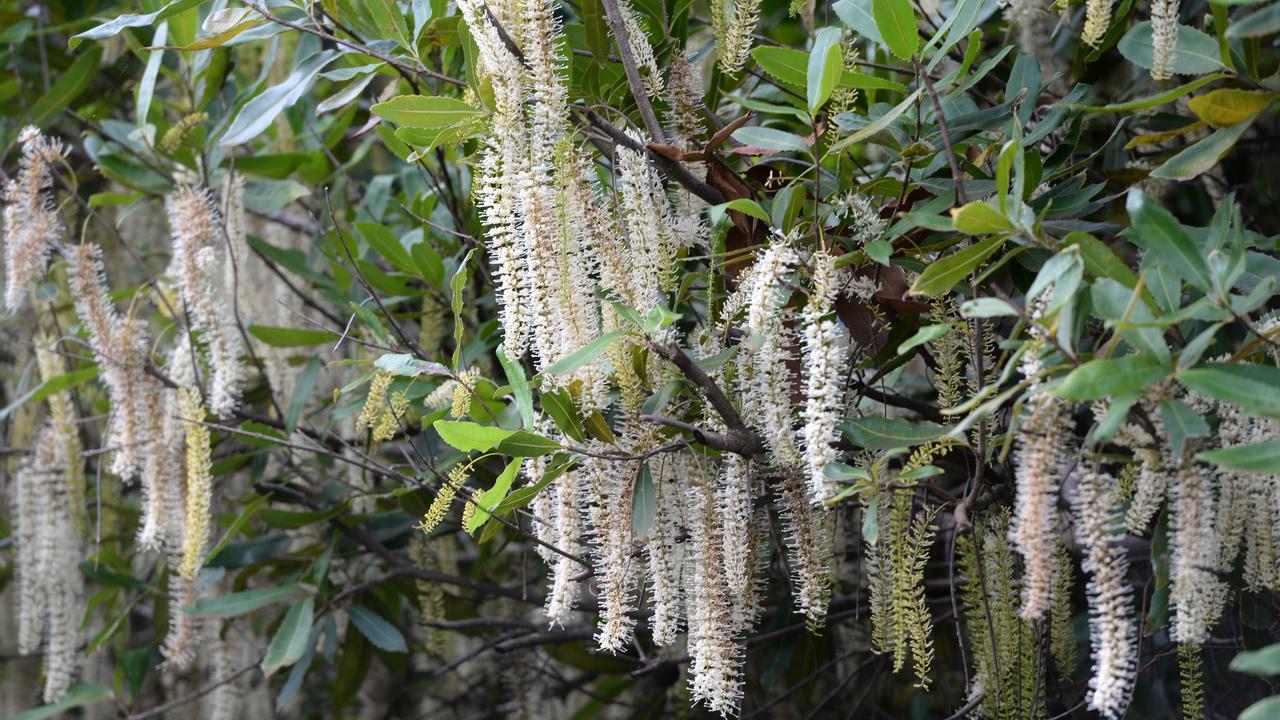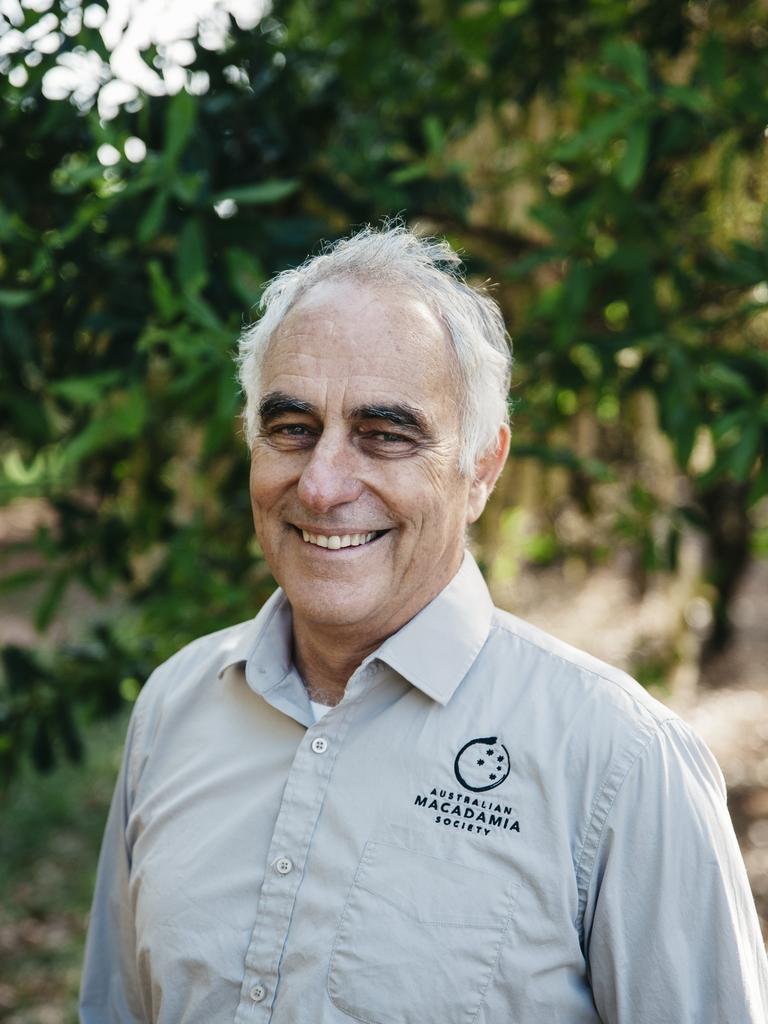Kernel behind region’s macadamia reign and cracking future prosperity
AMS CEO says the two processing plants in the region may have to expand or a third facility built in the next decade to be able to handle the increase in crop.

Bundaberg
Don't miss out on the headlines from Bundaberg. Followed categories will be added to My News.
Bundaberg has been going nuts for macadamias in recent history and the Australian Macadamia Society has high hopes the region's reign in the local industry will continue to prosper in 2021.
AMS CEO Jolyon Burnett said despite a slight decline in local production last year, they were forecasting an increase in crops both locally and nationally.
In 2019 Bundaberg produced 43 per cent of the national crop and last year produced 41 per cent of the nation's crop.
Mr Burnett said the slight decline showed 2020 was a "difficult" year because of how dry it was; however, he's hoping both the local and national crop to increase this year.
"Bundaberg is growing as a production region faster than any other growing region in Australia at the moment," he said.

The 2021 Australian macadamia crop is predicted to reach 50,770 tonnes in-shell at 3.5 per cent moisture (54,440 tonnes in-shell at 10 per cent moisture), according to a census-based forecast produced using scientific modelling developed by the Queensland Department of Agriculture and Fisheries.
Mr Burnett attributes the region's success in the national macadamia market to a combination of four key facets of the area.
Two of which are the availability of affordable and suitable land and water security in Mr Burnett's eyes.
"Available of water has been a real drawcard for Bundaberg and it is the reason why Bundaberg quite quickly became the largest growing region in the Australian industry," he said.
"Unfortunately, the work at Paradise Dam has put a question mark over that and we're certainly aware of some quite significant investments that have been put on hold while there's more certainty about what the government's plans are: in terms of either restoring that dam wall or developing alternative storages.
"So that has been a draw card, but it's more a question mark now."
He said the region's experienced horticultural growers - some of which are third or fourth generation - further aided the region's macadamia success.
Whether they've got experience in cane, sweet potatoes or tomatoes, Mr Burnett said the skills were transferable to macadamias.
The final aspect and perhaps the most important in his view, was the community's understanding of the value of horticulture.
"Almost every second person in Bundaberg knows someone who works in horticulture or works in horticulture themselves," he said.
"The economy of Bundaberg is inextricably linked to horticulture; it really makes a difference for an industry like us to have a supportive community like the one in Bundaberg."
This combination has made Bundaberg "an absolutely ideal" place to grow macadamias.

Mr Burnett said when it comes to the quality of the local crop was typically of the new variety, tend to have a higher kernel yields than some of the older orchards in northern New South Wales.
"The industry average for kernel, the edible part of the nut when you remove the shell … is about 34 per cent and many of the orchards in Bundaberg are getting over 40 per cent kernel recovery," he said.
And it's not just growing the crop where the region has excelled - we're also value-adding.
With two processing plants already in the region, Mr Burnett said they anticipate they would have to expand capacity or a third facility built throughout the next decade just to be able to handle the increase in crop coming from trees already in the ground.
He said this growth would generate employment, particularly in trades which service the likes of a processing plant.
Mr Burnett said they were vital parts of the community and they hoped policy decisions of government support and encourage investment.
For the last three or four years Mr Burnett said there was probably upwards of 2000ha per year of new plantings in the Bundaberg and the broader Bundaberg region.
"That's a phenomenal rate of growth," he said.
"And when you consider most of the growers in Bundaberg are getting 4 or 5 tonnes per hectare it's about 10,000 tonnes being added once the new planting come on stream.
He said the growth in Bundaberg had been done with the best practices which would hopefully put the local farms out in front.
From mechanical planting to drip irrigation Mr Burnett said these would be "some of the very best and hopefully most productive orchards in Australia when they come online in the next 3-4 years".
He said where some of their competition had cheap labour rates, we've had to be good innovators using mechanisation and automation whenever they can.
Mr Burnett said there were a couple of growers in Bundaberg trialling automated mowing and while there's some problems in the early days of the trial, he's optimistic for the future.
"Because of the all the orchards being GPS planted, when we get driverless tractors, remote control tractors, they'll be able to adopt those," he said.
"They're already using things like tree shakers to drop the crop more quickly so they can pick it up more quickly [and] get it into the factory sooner and ensure a high quality," he said.
"And that's going to be very important, those quick harvest times and better quality, as we compete more and more with other countries in the marketplace."
Mr Burnett said the two factories in Bundaberg both had the capacity to do value-adding products.
He said from roasted, salted, flavoured, to milk and oil, the macadamia was a very versatile product.
"We're available in over seven ales of the supermarket," Mr Burnett said.
"We're in fresh fruit and produce, but we're also in bakery, in ice cream, confectionary, in cooking ingredients, and increasingly we're seeing macadamia oils used in hand washes and shampoos and face creams …
"As we explore those new products I think the opportunities for new markets will be even greater."
The model-based forecast is an early estimate and will be further refined as the harvest gets underway in the coming weeks and months.
A mid-season crop report will be provided in May/June 2021.
MORE STORIES






